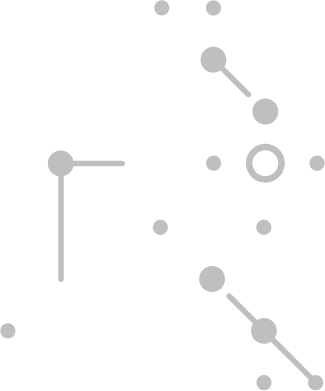



On the Way to Green Cloud Computing: How to Balance Scalability with Sustainability
2024-08-13 10:14:30Since the early days of cloud computing, we’ve observed a seductive narrative about it. Touted as greener, smarter, and more secure than predecessors, the cloud has allowed us to upload, stream, and share almost ad infinitum. In turn, we came to expect seamless access to data anytime and anywhere, as if it was free from the material world’s limits.
Yet, reality couldn’t be further from that. The cloud relies on a complex physical system consuming large volumes of water and electricity, and adding to carbon emissions.
Designing sustainable, or if you prefer, green cloud computing, requires continued effort, but it's a game worth the candle that makes your infrastructure future-proof. Learn how to set your business up for green cloud computing success.
Putting a figure on the cloud’s environmental impact
According to this MIT research, the cloud’s carbon footprint has already exceeded the airline industry’s.
An individual data centre can use as much electricity as 50,000 households. Data centres consume 200 Terawatt hours (TWh) of energy yearly, which is more than some nation-states.
Apart from electricity, the cloud is also thirsty. Another study estimates that a large data centre can ‘drink’ between 1 million and 5 million gallons of water a day (3,8 – 18,9 mln litres). That’s as much as a town of 10,000 to 50,000 people!
Of course, you can’t impact your hyperscaler’s global moves as an individual user. However, your cloud infrastructure decisions can make a huge difference regarding your footprint.
Here’s what to consider when designing a green cloud system for your business.
How to design a green cloud computing infrastructure
As one of the pillars of the AWS Well-Architected framework, sustainability includes practices dedicated to minimising the environmental impact of cloud-based workloads.
Most of these activities aim to reduce energy consumption and improve efficiency across all workload components. The goal is to maximise resource usage and reduce their number for increased sustainability and savings.
You can achieve this objective, for example, by:
– Changing or selecting an appropriate programming language for your application.
– Using new, more efficient algorithms.
– Using better-optimised data storage and management techniques.
– Moving your infrastructure to the cloud to share computing power and use the resources provided.
– Determining your system’s performance thresholds and power requirements.
Let’s now dive deeper into some of the industry’s best practices for designing or planning updates to your setup to make it more sustainable.
Five industry best practices for green cloud computing
1. Choose regions based on business and sustainability goals.
This best practice refers to selecting cloud resources necessary for your business KPIs from regions marked as renewable energy projects or locations with low carbon intensity.
You can use resources like Electricity Maps to determine which areas have lower carbon footprint levels.
Cloud providers like GCP also offer tools that help you pick the most optimal regions for your requirements based on carbon footprint, price and latency.
2. Match your demand dynamically.
This practice involves scaling resources against load. You can avoid adding redundant resources by testing and configuring cloud resources against demand and ensuring flexibility in this matter.
Scaling – dynamically adding and removing resources for your workload – positively impacts costs and energy consumption in server rooms.
Moreover, you can use software optimisation and event-driven architecture to plan the use of resources according to the situation.
Serverless solutions like AWS Lambda are great for green cloud computing systems as they only use as many resources as allocated for a given activity.
3. Optimise software and architecture.
It’s possible to design a cloud system to make optimal use of reserved resources.
Implementing appropriate technologies for smooth operation and keeping the load on components at a high level of resource consumption reduces their idleness from lack of use.
It can be implemented with multi-threading implementations, for example thanks to the use of goroutines in the Go language or threading in Python.
Allowing multiple threads to execute simultaneously on a single processor helps to ensure its more efficient use. This feature, in turn, reduces the processor’s idle time waiting for a single thread to finish, and less idle time is lower power consumption.
4. Improve your data storage and management practices.
Suppose you reserve excess storage for not-yet-existing data or keep it longer than necessary. In that case, your vendor may want to increase the pool of resources available to customers and, therefore, consume more natural resources.
Modern technologies offer many data storage services for varying amounts of data, needs, and purposes. Data lifecycle is an essential aspect for your infrastructure architect to consider to limit the amount of redundant data space in use.
Doing so ensures appropriate data classification by determining if you need fast access for long data storage or if you can retrieve it slower. And ultimately, it allows you to choose the right energy-efficient tier for your data.
5. Make the right resource and service decisions.
This green cloud computing standard relates to keeping the amount of hardware necessary for implementing the system or application to a minimum.
Choosing the most appropriate hardware, like an instance type or service for a workload, impacts sustainability positively as it helps to reduce waste. Moreover, carefully selected energy-efficient instances can significantly reduce your expenses and emissions.
Tracking your cloud setup’s carbon footprint
When designing a green cloud computing system, it’s also useful to consider carbon footprint measuring tools such as Carbon Footprint on Google Cloud Platform or Emissions Impact Dashboard on Microsoft Azure.
Such solutions show the resources your infrastructure uses, helping to identify the elements that contribute the most to your system’s carbon footprint.
Alternatively, Cloud Carbon Footprint is a great free and open-source tool for checking your setup’s carbon footprint. This and similar solutions let you assess and monitor your setup’s environmental impact in real-time, but also provide recommendations on reducing it.
Marching towards a more sustainable future
Lower hardware use and lower resource utilisation translate to lower energy consumption.
With over 300 new sites in the pipeline, the number of hyperscale data centres will likely exceed 1,000 by the end of 2024. All these corporations and their data centres already require massive amounts of electricity to match their customer demand – and this level will most likely only grow.
Cloud providers like Amazon and Microsoft have declared switching to use 100% renewable energy in their data centres by 2025, while Google made such a promise by 2030. Additionally, all major vendors focus on carbon, water, waste, and the ecosystem, as their customers and public opinion demand them to do so.
As CSPs commit to and achieve their renewable energy goals, the momentum towards greener computing will grow. By choosing relevant tools and practices, your business can join this collective effort and, hopefully, contribute to curtailing the need to expand data centre facilities.
Your turn
Although building green cloud computing requires continuous efforts, the rewards are multifold.
From cutting waste to reducing energy consumption and carbon footprint, each step towards sustainability gets you closer to a more resilient and affordable tomorrow.
Get the support you need to design and implement a green cloud computing infrastructure for your business – drop us a line today.

